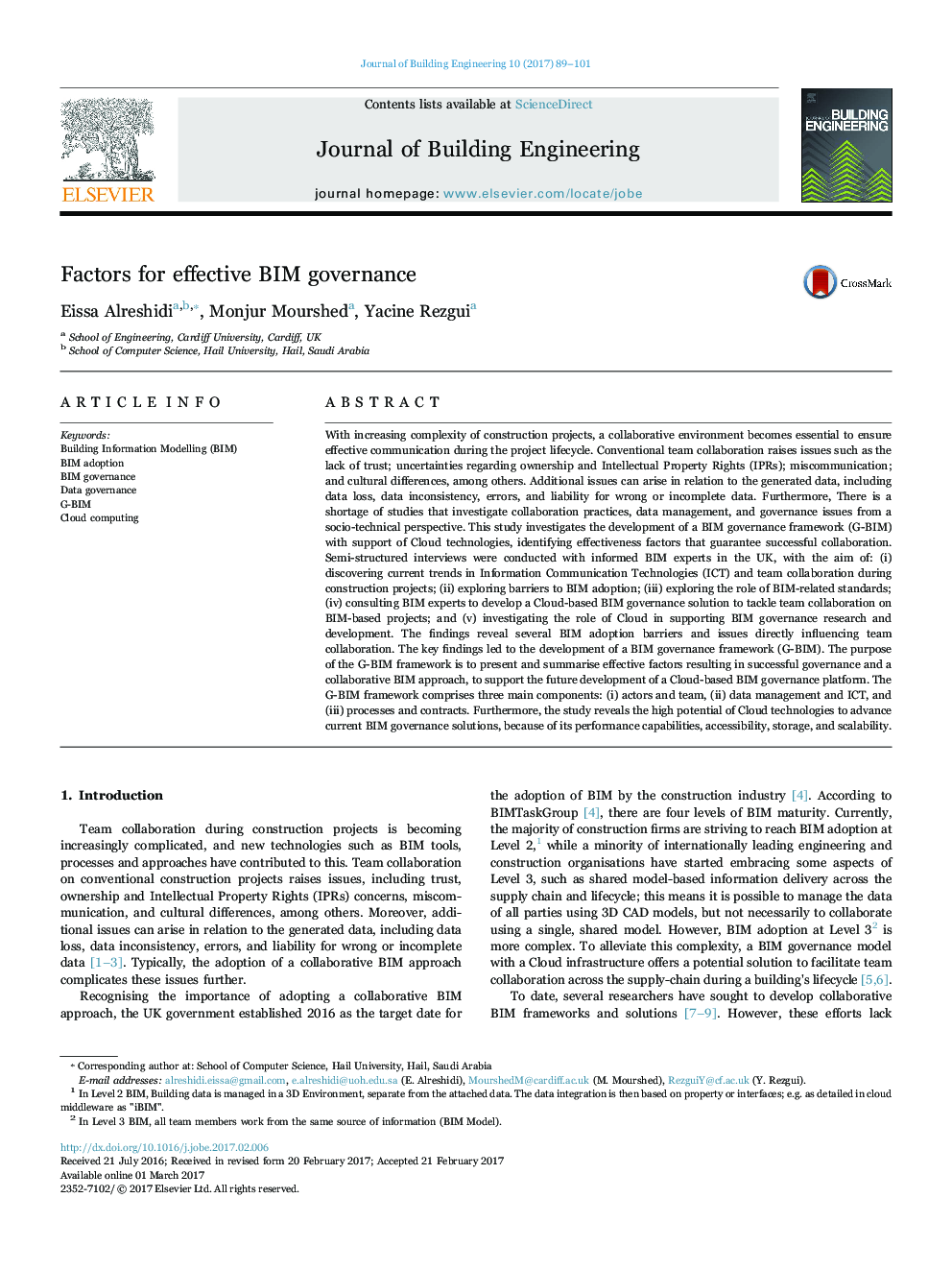| کد مقاله | کد نشریه | سال انتشار | مقاله انگلیسی | نسخه تمام متن |
|---|---|---|---|---|
| 4923096 | 1430638 | 2017 | 13 صفحه PDF | دانلود رایگان |
عنوان انگلیسی مقاله ISI
Factors for effective BIM governance
دانلود مقاله + سفارش ترجمه
دانلود مقاله ISI انگلیسی
رایگان برای ایرانیان
کلمات کلیدی
موضوعات مرتبط
مهندسی و علوم پایه
سایر رشته های مهندسی
مهندسی عمران و سازه
پیش نمایش صفحه اول مقاله

چکیده انگلیسی
With increasing complexity of construction projects, a collaborative environment becomes essential to ensure effective communication during the project lifecycle. Conventional team collaboration raises issues such as the lack of trust; uncertainties regarding ownership and Intellectual Property Rights (IPRs); miscommunication; and cultural differences, among others. Additional issues can arise in relation to the generated data, including data loss, data inconsistency, errors, and liability for wrong or incomplete data. Furthermore, There is a shortage of studies that investigate collaboration practices, data management, and governance issues from a socio-technical perspective. This study investigates the development of a BIM governance framework (G-BIM) with support of Cloud technologies, identifying effectiveness factors that guarantee successful collaboration. Semi-structured interviews were conducted with informed BIM experts in the UK, with the aim of: (i) discovering current trends in Information Communication Technologies (ICT) and team collaboration during construction projects; (ii) exploring barriers to BIM adoption; (iii) exploring the role of BIM-related standards; (iv) consulting BIM experts to develop a Cloud-based BIM governance solution to tackle team collaboration on BIM-based projects; and (v) investigating the role of Cloud in supporting BIM governance research and development. The findings reveal several BIM adoption barriers and issues directly influencing team collaboration. The key findings led to the development of a BIM governance framework (G-BIM). The purpose of the G-BIM framework is to present and summarise effective factors resulting in successful governance and a collaborative BIM approach, to support the future development of a Cloud-based BIM governance platform. The G-BIM framework comprises three main components: (i) actors and team, (ii) data management and ICT, and (iii) processes and contracts. Furthermore, the study reveals the high potential of Cloud technologies to advance current BIM governance solutions, because of its performance capabilities, accessibility, storage, and scalability.
ناشر
Database: Elsevier - ScienceDirect (ساینس دایرکت)
Journal: Journal of Building Engineering - Volume 10, March 2017, Pages 89-101
Journal: Journal of Building Engineering - Volume 10, March 2017, Pages 89-101
نویسندگان
Eissa Alreshidi, Monjur Mourshed, Yacine Rezgui,